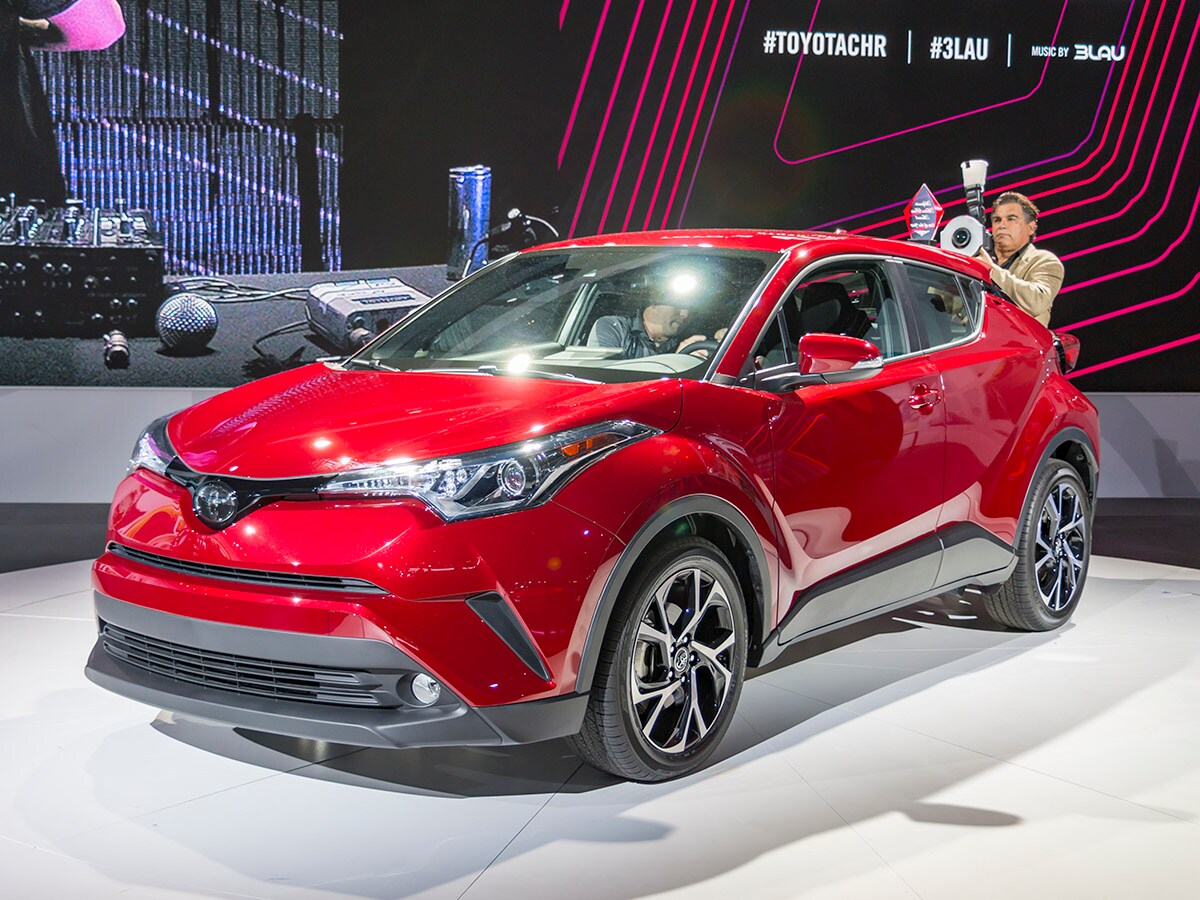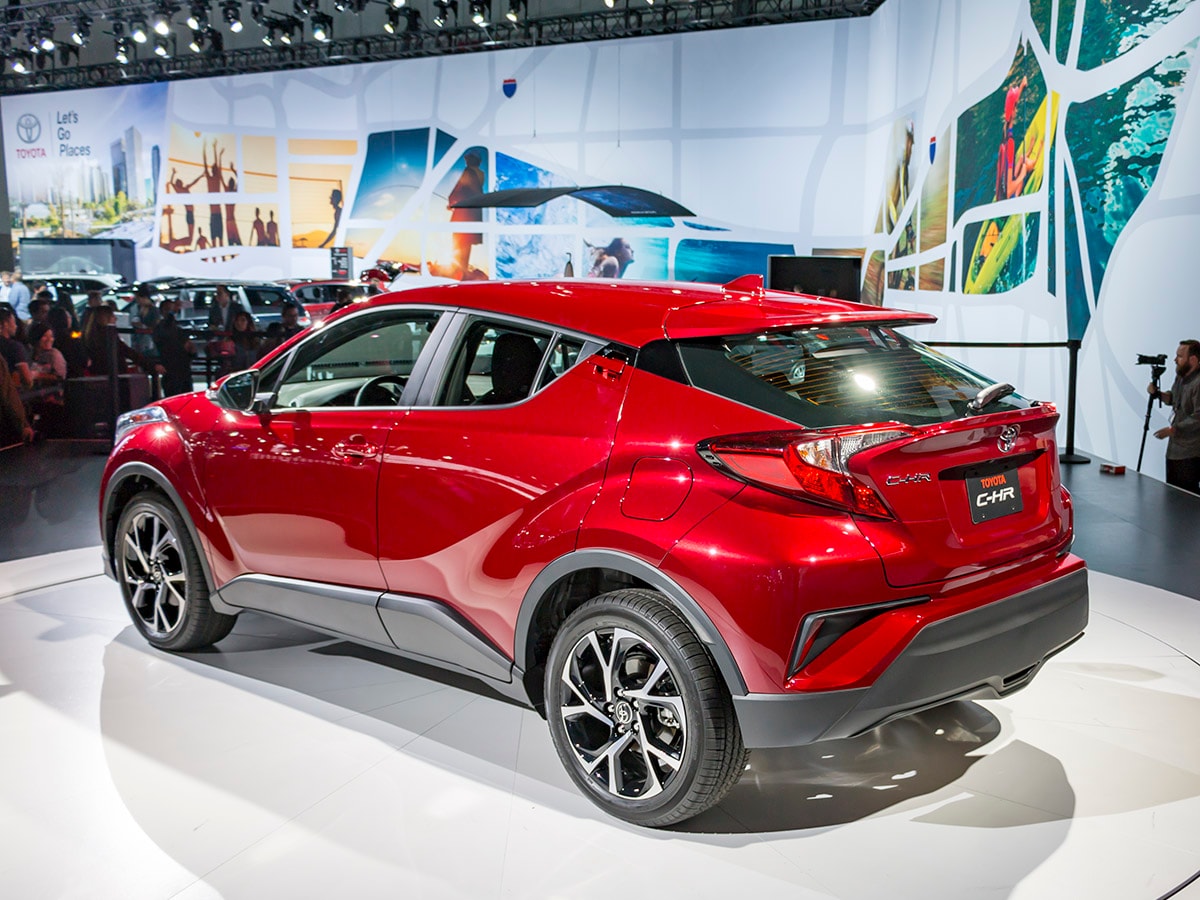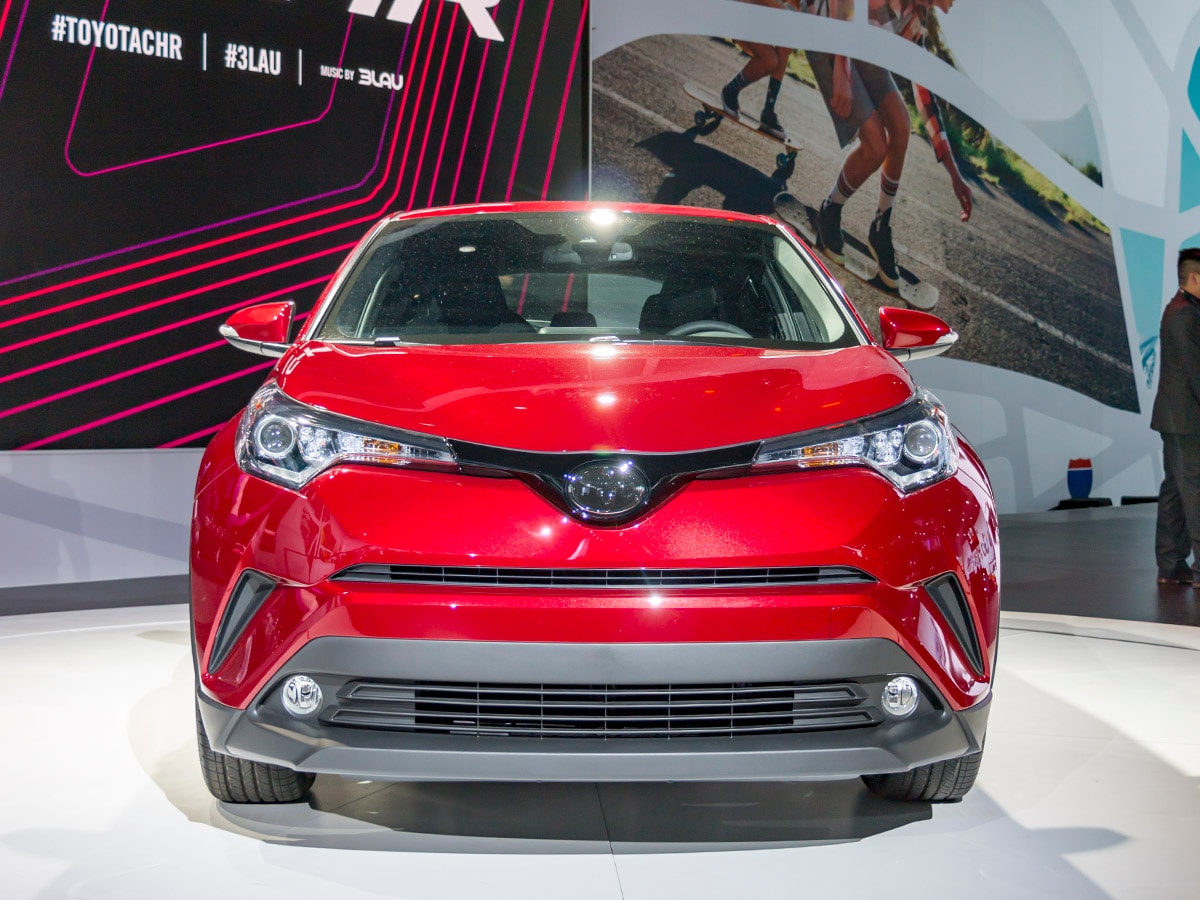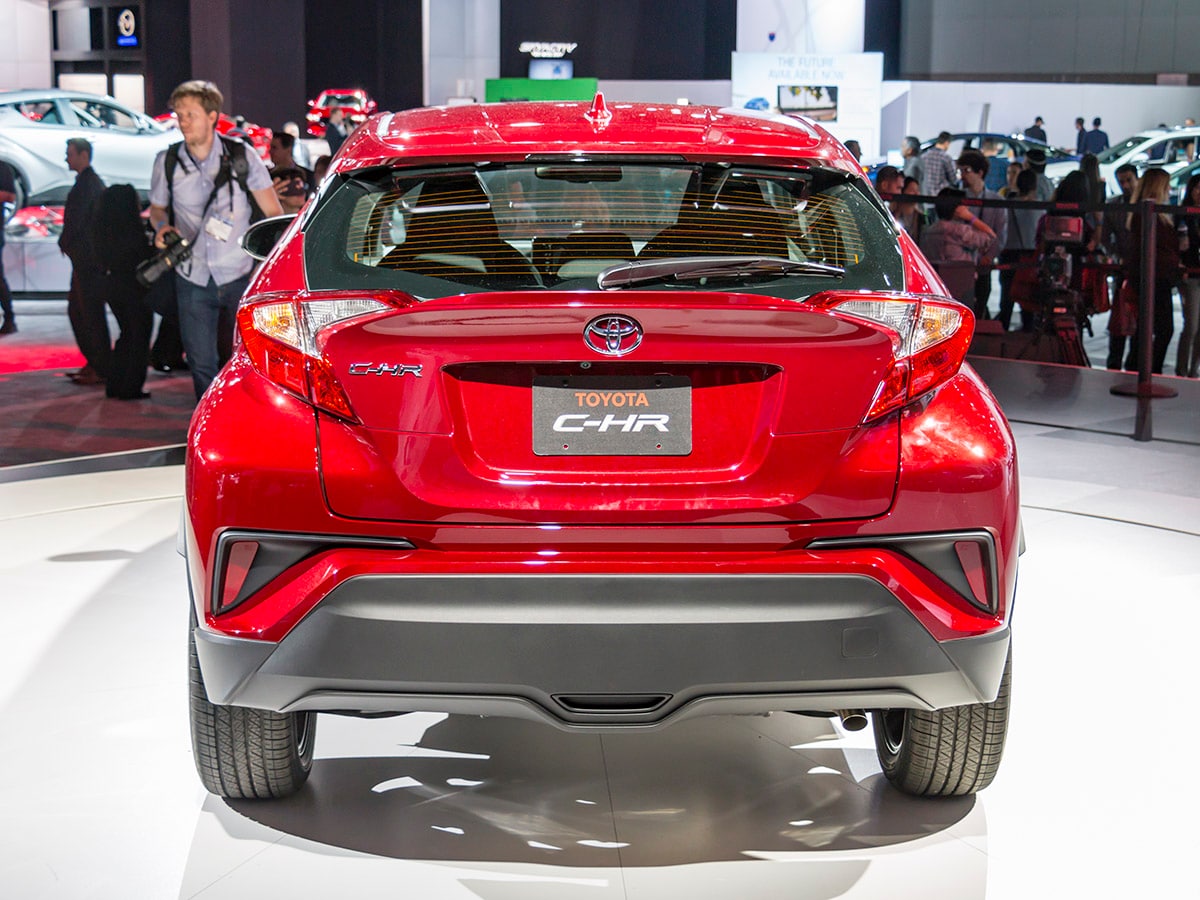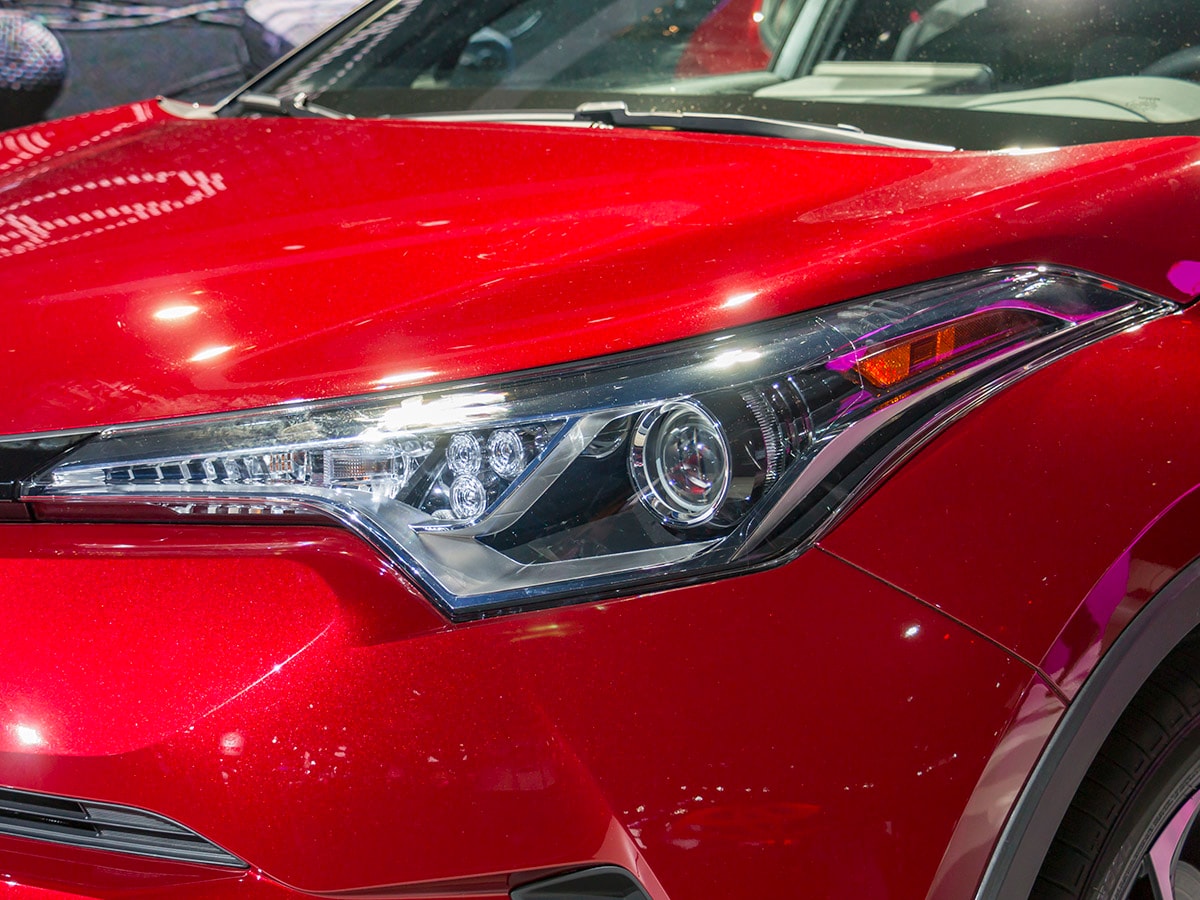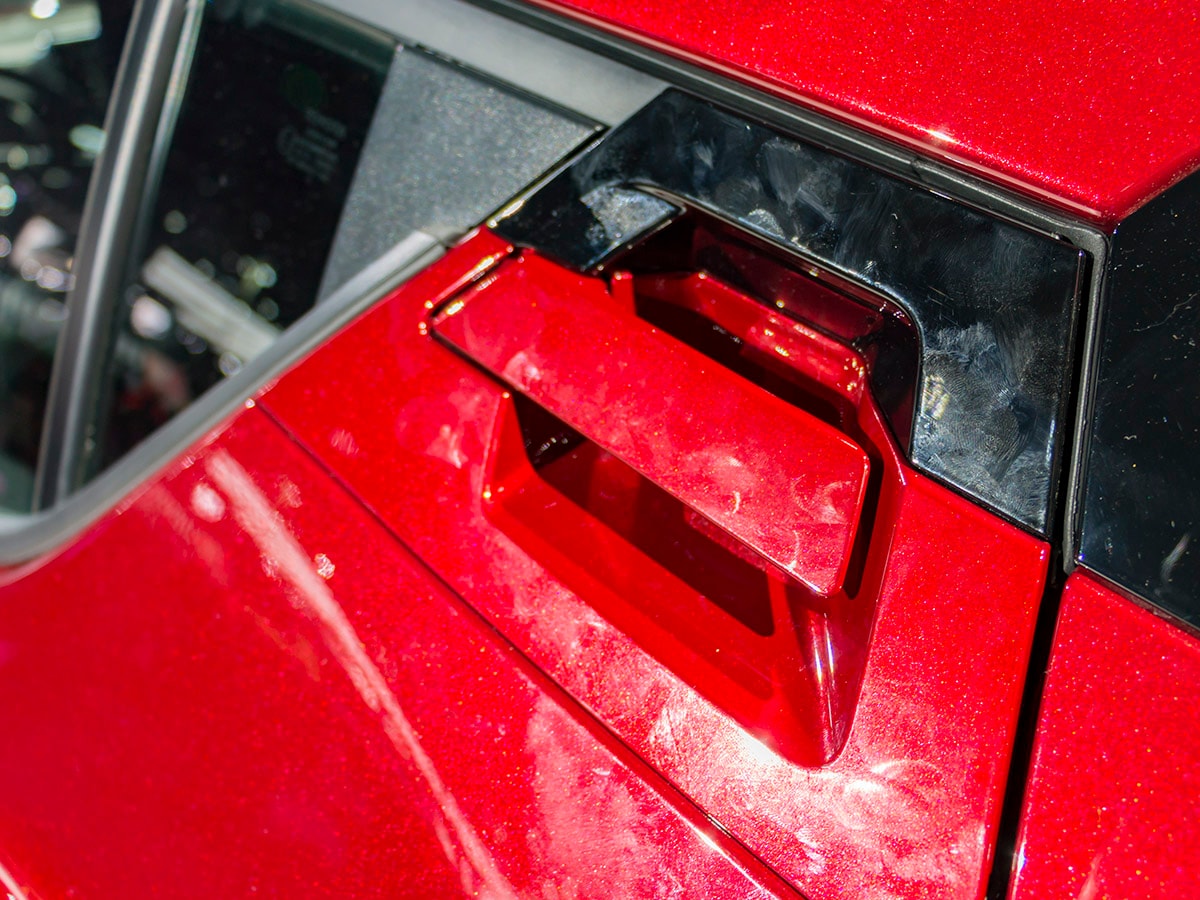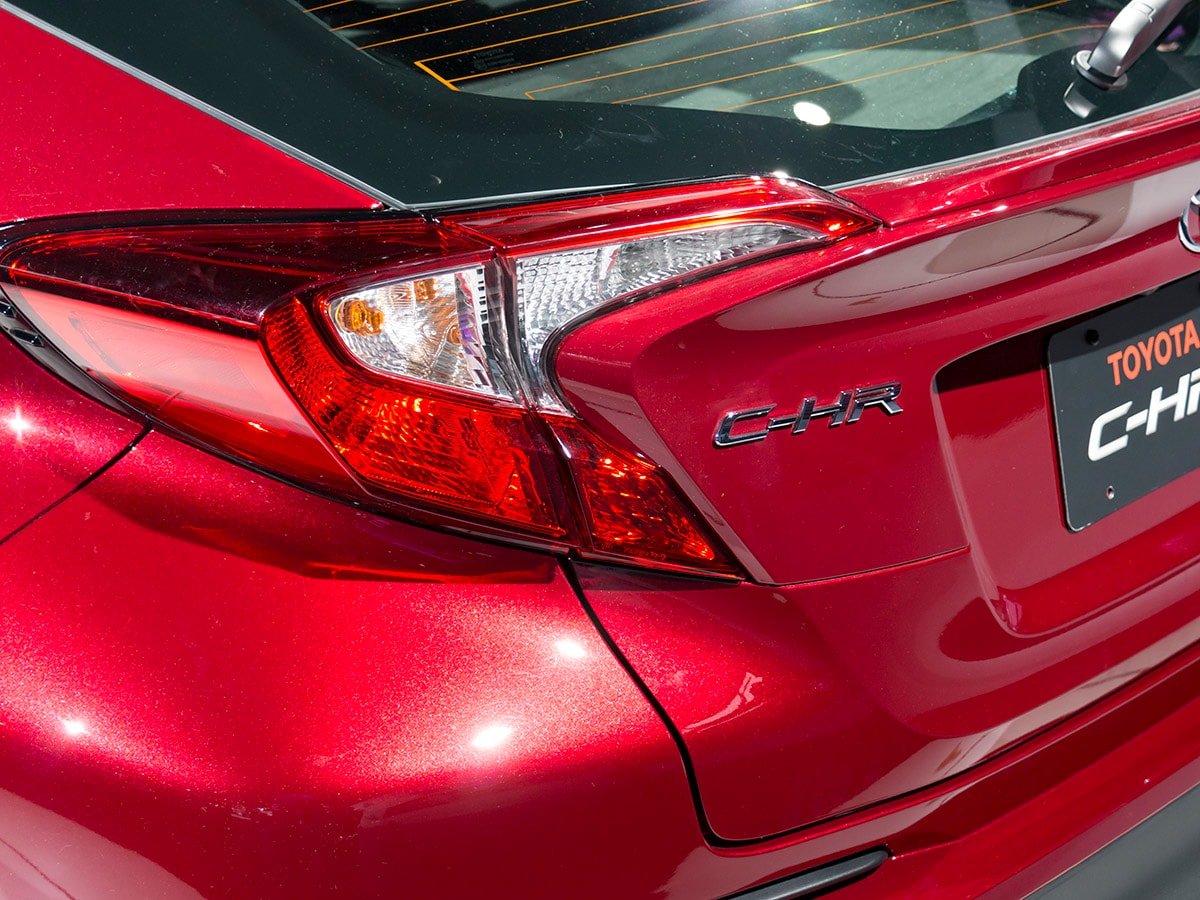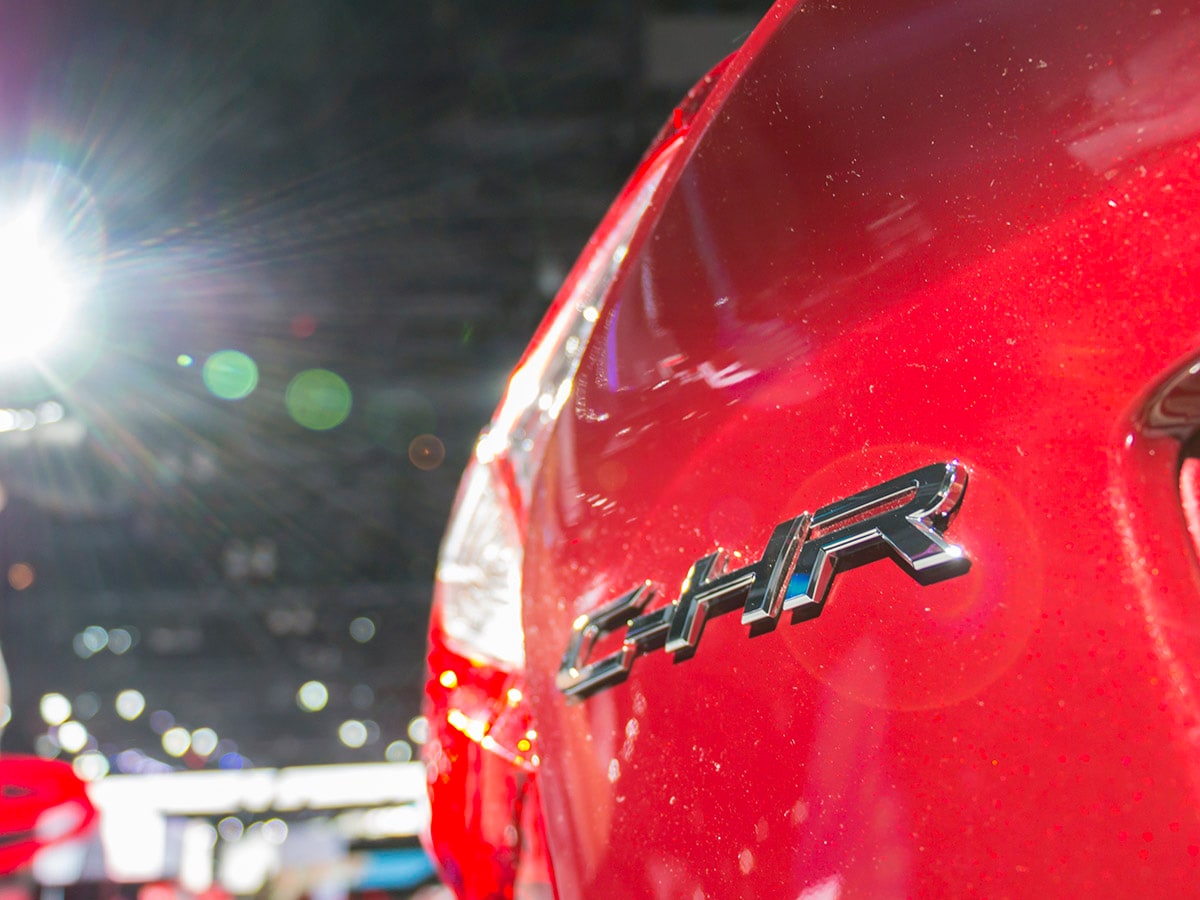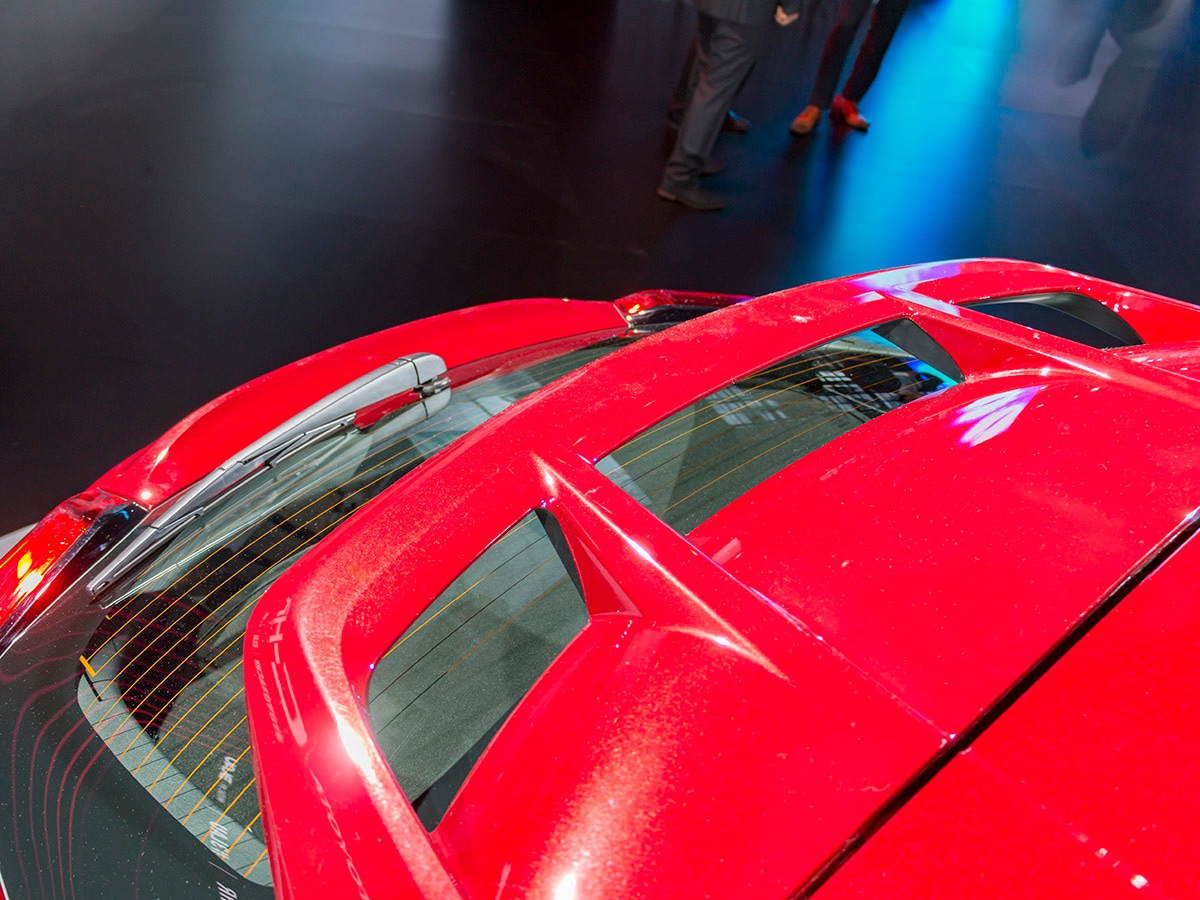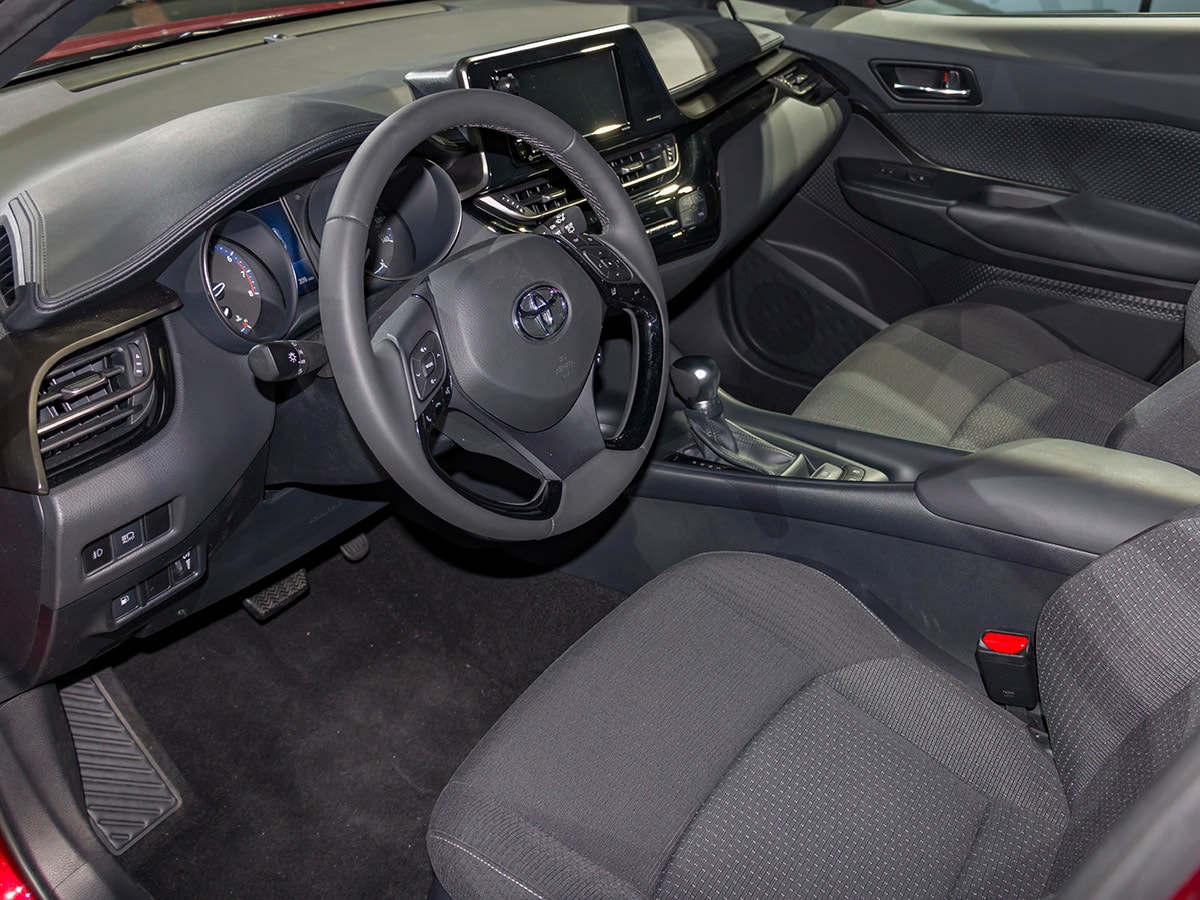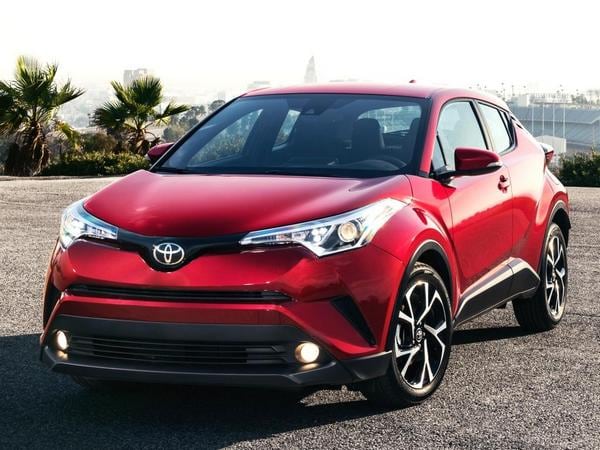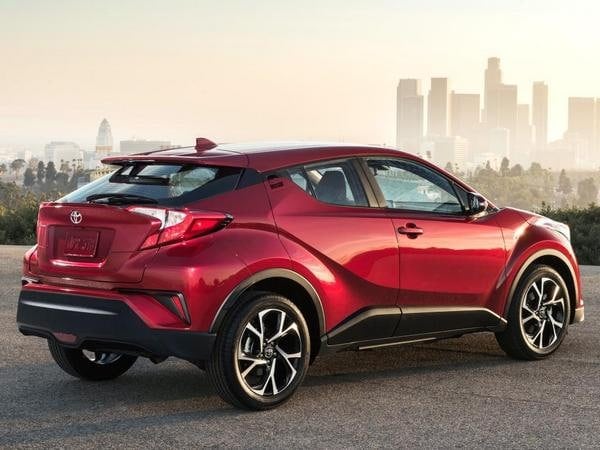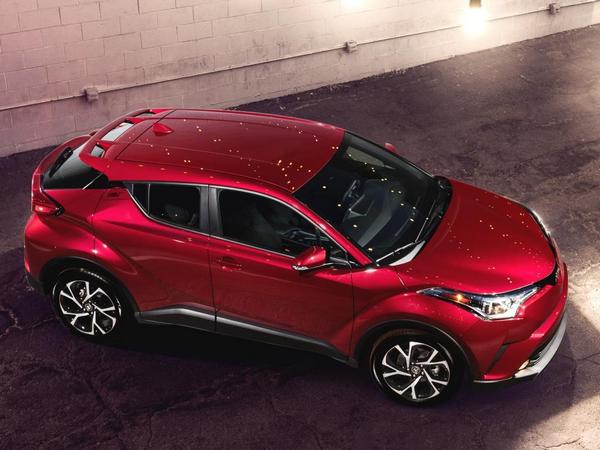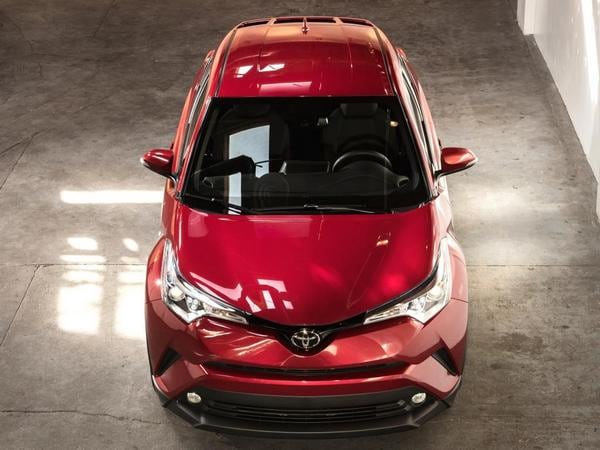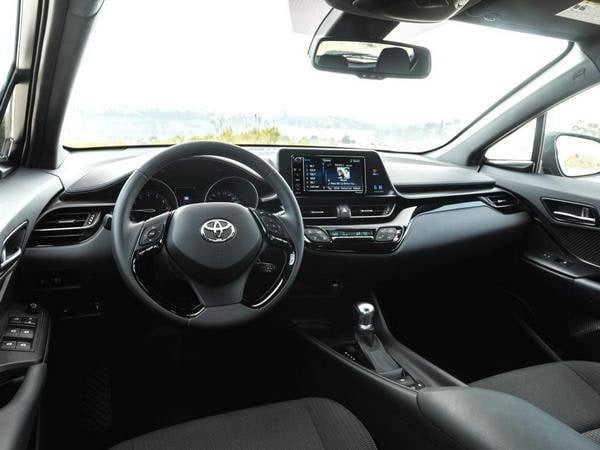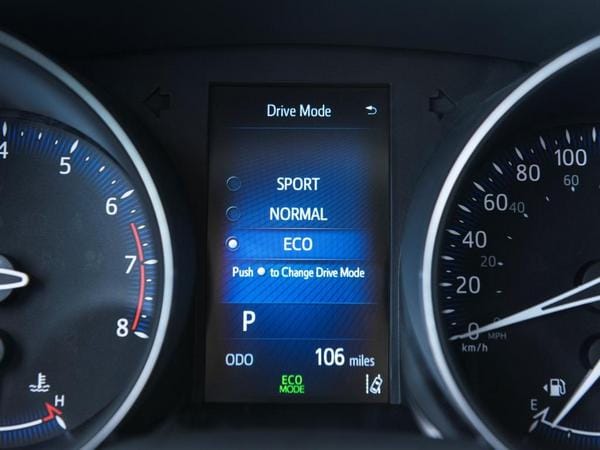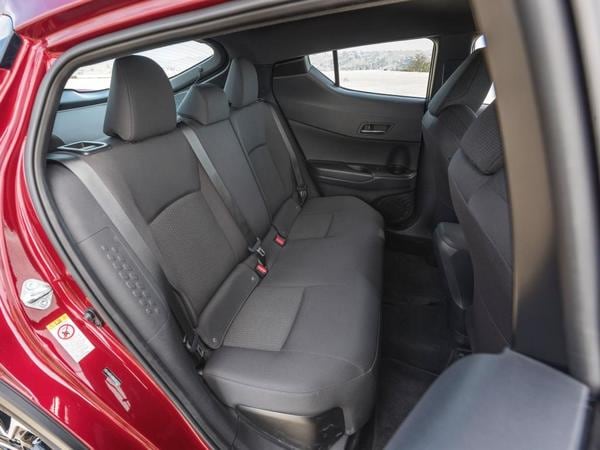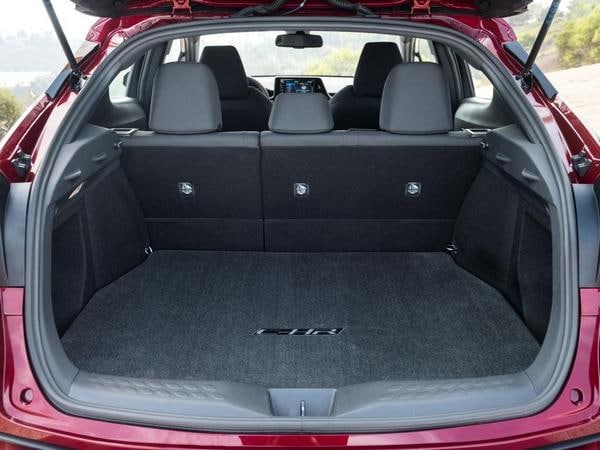UPDATE: We now have our first review of the 2018 Toyota C-HR, including pictures and pricing.
Appearing in full U.S. production guise, the 2018 Toyota C-HR debuted at the Los Angeles Auto Show. While sharing much in common with the international-spec C-HR presented in last March in Geneva, this dramatically-styled 5-door that Toyota is calling a “Coupe High-Rider” boasts its own distinctive touches for American buyers when it arrives next spring in XLE and XLE Premium trim grades.
Breaking conventions
This subcompact crossover is based on the same Toyota New Global Architecture (TNGA) that underpins the latest Prius and promises to deliver a kick to match its visual pop. Toyota says the C-HR’s “Distinctive Diamond” styling previews a bold new direction in the company’s design philosophy. Blending edgy character lines with 3D details, the C-HR’s multifaceted bodywork pushes the limits of convention. Spanning 171.2 inches from its aggressive nose to its uniquely tapered tail, the Toyota C-HR is 70.0 inches wide. It has a 103.9-inch wheelbase, which is longer than key rivals like the Chevrolet Trax, Honda HR-V Mazda CX-3 and Nissan Juke and rides on 18-inch alloy wheels wrapped in V-rated 225/50 tires.
Although both hybrid and AWD versions of the C-HR are now being offered in some markets, at its launch here all versions will be fitted with a 2.0-liter naturally aspirated 4-cylinder engine driving the front wheels. The engine makes 144 horsepower and 140 lb-ft of torque and it’s teamed with a new CVT automatic transmission that augments the standard Drive mode with a Sport setting that creates seven “virtual” gears. Toyota used the Nürburgring’s famous Nordschleife circuit to hone the handling characteristics of the C-HR. Further reinforcing the already robust TNGA structure for this application, engineers tuned the fully independent suspension to give the C-HR agility without sacrificing ride compliance.
Loaded with creature comforts
Inside, the C-HR’s 5-passenger cabin features soft touch surfaces and a logical control layout which Toyota says feature a driver-centric “MeZONE” orientation. Just beyond its small-diameter multifunction steering wheel lies a main instrument cluster that incorporates a 4.2-inch Multi-Information Display. Well-bolstered front buckets are matched with a 60/40 rear bench with flat-folding backs that enhance cargo capability.
Related: See other cars and concept vehicles unveiled at the 2016 LA Auto Show
Standard features in all C-HR models include dual-zone climate control, an AM/FM/HD Radio system with a 7.0-inch touchscreen display and Aha app, voice recognition, Bluetooth, a USB port and AUX jack, heated power-folding side mirrors, backup camera and an electric parking brake. Also included is the Toyota Safety Sense P (TSS-P) active safety suite that includes Pre-Collision System with Pedestrian Detection, forward collision warning and Automatic Emergency Braking, Lane Departure Alert with Steering Assist, Automatic High Beams and Full Speed Dynamic Radar Cruise Control. Moving up from XLE to XLE Premium trim adds Smart Key with Push Button Start, heated front seats, driver-side power-adjustable lumbar support, auto-folding heated side mirrors with puddle lamps that project “Toyota C-HR” and fog lamps as well as Blind Spot Monitor and Rear Cross Traffic Alert.
Pricing information on the 2018 Toyota C-HR as well as official EPA rating numbers will be released closer to the official on-sale date.
More Toyota News…
2017 Toyota Prius Prime: Plugging into more range and mpg
2017 Toyota Highlander gets major upgrades
2017 Toyota 86: New name, more power for Scion FR-S
More New and Redesigned Models for 2018
